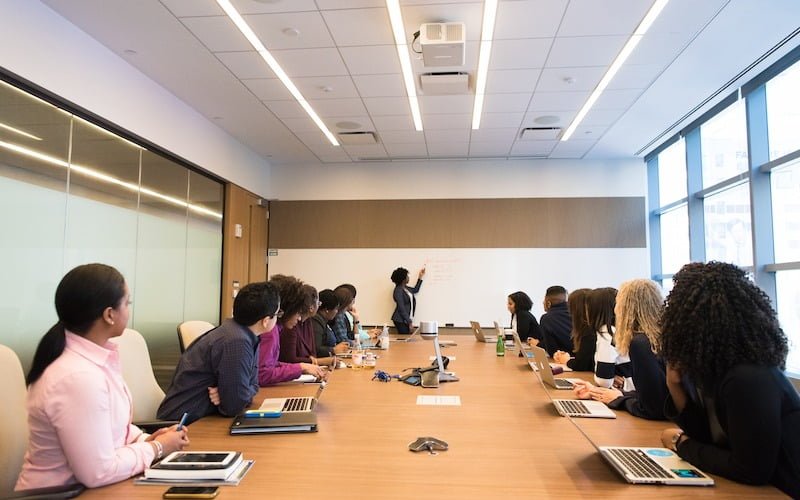
The “Jurassic Park” Problem: How to avoid having a rogue IT person wreaking havoc in your business?
Curated by: Sergio A. Martínez
IT has become a vital element of modern businesses. It helps streamline complicated tasks like data management, customer communications, logistic planning, inventory tracking, and much more, and with a reliable IT infrastructure, businesses can identify new opportunities to secure better positions and increase success. Technology also increases the efficiency of employee productivity with tools such as remote collaboration platforms and automation solutions-enhancing operational agility, and (perhaps most importantly), businesses can gain an invaluable understanding of their customers by leveraging Big Data technologies which help gather customer feedback in real-time to make better decisions quickly. All in all, it becomes clear that modern businesses cannot survive without reliable IT support, making it the backbone of every successful organization today.
However, the importance of IT means that, if not managed properly, this area can become a vulnerable spot for malicious activities. And we are talking about more than outdated systems or weak passwords; a lack of the proper protection and approach to the IT demands of a business can set off a chain reaction that leads to data loss, security breaches, and serious financial damages. To avoid such breakdowns, organizations should remain diligent in their approach to IT – regularly updating their systems and educating staff on how to protect confidential information. But sometimes, even this is not enough. Sometimes, the call comes “from inside the house”.
Let’s take a funny example of what we mean: Jurassic Park, a cinematic classic that depicted the consequences of human curiosity getting ahead of our technical knowledge and abilities. In the movie, the breakdown of the park is set by a chain reaction of deficient approaches to security, management, and technology, really underscoring how vital these security measures are, even for the most cutting-edge technology. Disaster can quickly occur when deficiencies or malicious actors are not addressed appropriately, perhaps offering an allegory for the high stakes involved with managing today’s cyber infrastructure. As illustrated throughout the film, underestimating risks carries great consequences, and whether computing networks, industrial structures, or hybrid environments, a secure foundation is key to avoiding catastrophic repercussions.
Implementing best practices, such as authentication and encryption protocols, testing networks regularly and actively informing employees about threat scenarios can minimize risk and maximize resilience in any system. By providing a great storyline while emphasizing essential IT principles, this classic film reinforces why taking security precautions should always be considered—now more than ever before. For businesses or organizations handling sensitive data, individuals need to take initiative in understanding their responsibilities and roles in protecting corporate information from cyber-attacks or malicious use.
The human element of IT risk

Arguably, one of the main points of Jurassic Park is showing why having less-than-ideal IT personnel causes all sorts of problems, and can be catastrophic for a business. By the nature of their job, they have access to sensitive data which, when put in the wrong hands, can be used for nefarious purposes, as well as let in malicious actors by neglecting to patch systems or by not monitoring user activity, allowing third-parties access to information they shouldn’t. Furthermore, they can misuse privileged access, delete data, or create accounts with admin privileges to keep the system and networks open to themselves.
Ultimately, what a rogue IT person can do is put an entire business at risk outside of traditional cybercrime, giving competitors advantageous inside knowledge (just like the character of Dennis Nedry does in the movie) or manipulating software to perform unwanted tasks. Indeed, in most cases, the development of malicious software by an insider is virtually indistinguishable from cyberattacks by outside actors, so taking steps to secure your business and prevent unauthorized changes is essential if you want to protect your assets, resources, and brand reputation. In hindsight, taking full measures to prevent such situations is what protects businesses, ensuring they have policies and procedures in place to monitor the behavior of their IT staff, particularly when it comes to sensitive matters such as data access and storage. It’s important to review logs and technical security measures such as firewalls and system software patches to make sure they are up-to-date. However, you could say that these steps are more about mitigating potential harm done by disruptive people than outright preventing it. What is the best approach, then, to avoid falling into such circumstances?
Trust is the name of the game

Contacting an experienced systems analyst or consultant may help offer an unbiased opinion on remediation strategies that can be implemented to address any issues caused by the rogue IT person. So, for any business looking to build an IT department, but doesn’t have much experience in the field, establishing trust with anyone tasked with handling digital infrastructure and sensitive data, is the most critical step of the whole project. So the correct approach must be taken.
Partnering with a Nearshore company can be an effective way to reduce the likelihood of a costly and embarrassing IT situation, for example. While keeping up with the latest software, security protocols, and technology trends can be difficult for in-house teams, hiring or contracting expertise from a Nearshore firm adds an invaluable layer of external expertise that businesses can use to protect themselves against bad IT situations such as data loss or system downtime by ensuring there is expert oversight built-in to their processes. Companies that partner with Nearshore organizations can rest assured knowing they have access to experienced professionals who will put the proper security measures into place while also minimizing risk, ensuring successful IT management nearby, with much easier access to issues that may arise. Additionally, with almost instantaneous communication, language barriers are far less of an issue; the nuances of various dialects and the distance between different countries ensure that experience with different cultures is taken into account to create an effective solution.
“Nearshore development partnerships offer a powerful combination of advantages to mid-sized businesses that are looking to outsource their IT work,” says Rodolfo Cruz, Project Management Officer and Partner at Scio. “These partnerships are often more trustworthy than the alternatives, like freelancers or local talent, because they have accountability standards in place that provide substantial benefits in terms of quality assurance and accessibility. This is particularly important for mid-sized businesses as it removes the significant psychological burden placed on them when considering outsourcing — namely that something will go wrong or be impossible to address. With Nearshore development partnerships, these problems can largely be avoided as they meet agree-upon performance guarantees and have personnel who are accessible and easy to communicate with.”
Because, when it comes to IT matters, trust is an invaluable asset. Every step in the process of acquiring and maintaining technology requires an element of trust – from trusting vendors to appropriately provide reliable hardware and software solutions, to relying on company employees to keep confidential data safe, trust is a necessary ingredient for any successful IT operation. By having the assurance that their data is handled properly, people and organizations can focus on the problems at hand rather than worrying about security breaches or technical hiccups. For any IT work to progress normally, all parties must be confident that systems are properly secured, that equipment functions as expected, and that sensitive information remains uncompromised. Establishing a clear chain of command within the IT department also helps establish a formalized reporting structure that prevents any single technician from having too much power or responsibility. Additionally, regular internal audits can help identify any unusual system activity and provide peace of mind that the network is secure. Finally, proper training for all personnel on new technologies and policies keeps everyone up to date and aware of security protocols, ensuring minimal disruption from rogue actions. With these safeguards in place and strong relationships built on trust between all players in a technology system, operations can safely proceed.
Avoiding the “Jurassic Park” problem
In other words, to prevent rogue IT technicians from creating chaos in the workplace, it is essential to have extensive management policies and procedures in place. The lesson is that businesses must understand the potential risks associated with any technological system they implement, as well as the appropriate steps needed to achieve a safe operation. Individuals and companies alike need to be cognizant of evolving threats to create effective security initiatives. With its exciting plot, Jurassic Park serves as a parable for the need for sound practices in IT; we must remember not all advances come without inherent risk.
So, if you are looking for solutions regarding IT, Nearshore development partnerships can be the perfect solution for mid-sized businesses seeking to streamline their IT management. Companies that are willing to partner with companies in other countries gain access to a more comprehensive network of software engineers and talent with specialized skills. When searching for an effective IT solution, it pays to consider the advantages that come with selecting nearshore development partners. Taking these proactive steps to prevent a potential rogue IT person will minimize future conflicts, protect company assets and ensure everyone is looking in the same direction. As we can see from Jurassic Park, IT security is vital for maintaining a safe and efficient workplace environment, and without proper protocols in place, unauthorized users can access confidential data often leads to a catastrophic result that you can avoid with the proper people on your side.
The Key Takeaways
- IT has become the backbone of most modern businesses, and as such, it can become both a strength and a weakness for a company for several reasons.
- One such risk, for example, is having an IT technician using his position to damage the business, which can be crippling for a company, as illustrated by the movie “Jurassic Park”.
- That’s why “trust” should be part of every IT process, and having the appropriate people to trust with such responsibility is critical for the well-being of a business.
- Nearshore partnerships, for example, can guarantee this kind of trust, providing any business with the professionals they need to keep operations running well.

















